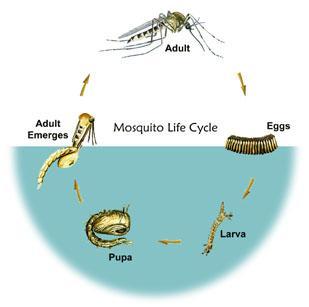Stormwater Best Management Practices (BMPs) help remove pollutants from stormwater runoff, provide stream protection and volume reduction in order to prevent damage and erosion to our waterways, and prevent flooding in our communities. BMPs are an effective and practicable means of preventing or reducing the amount of non-source pollution to a level compatible with water quality goals.
The County's preferred BMPs include: Step Pool Stormwater Conveyance Systems (SPSC), Constructed Wetlands, Infiltration Systems, Dry and Wet Stormwater Management Ponds as well as other types of Maryland Department of the Environment (MDE) allowed BMP facilities. BMPs also include homeowner installed practices such as rain gardens or rain barrels. There are thousands of stormwater BMPs in the County and some of these facilities must temporarily or permanently retain water. This is why BMPs are often blamed for breeding mosquitoes. However, when stormwater BMPs are designed in accordance with the MDE Stormwater Design Manual, and maintained properly, mosquito populations are shown not to be a concern.
Mosquito Life Cycle
According to the US Environmental Protection Agency, it generally takes about 7-10 days for an egg to develop into an adult mosquito. Knowing the different stages of the mosquito's life will help you prevent mosquitoes around your home. All mosquito species go through four distinct stages during their life cycle:

- Egg - hatches when exposed to water.
- Larva - (plural: larvae) "wriggler" lives in water; molts several times; most species surface to breathe air.
- Pupa - (plural: pupae) "tumbler" does not feed; stage just before emerging as adult.
- Adult - flies short time after emerging and after its body parts have hardened.
Step Pool Conveyance Systems (SPSC)
SPSC systems are open-channel conveyance structures that convert, through attenuation ponds and a sand seepage filter, surface storm flow to shallow groundwater flow. These systems safely convey, attenuate, and treat the quality of storm flow. These structures utilize a series of constructed shallow aquatic pools, riffle grade control, native vegetation, and an underlying sand/woodchip mix filter bed media.
After being planted with native vegetation, mosquito breeding is minimized as SPSC's contain ecosystems with natural predators that feed on mosquitoes, such as frogs and dragonflies, which tend to keep mosquito populations in check.
Dry and Wet Ponds
There are two main types of ponds used to manage stormwater – dry ponds and wet ponds. Dry pond are designed to hold water during storm events and then release the water within 3 days. Because these systems are designed to hold water for only short periods of time, they are not suitable habitat for mosquitoes.
Wet ponds are designed to hold permanent pools of water. These systems are usually between 3 and 5 feet in depth. Most mosquitoes only breed in shallow standing water (i.e. less than 3 feet) or deeply vegetated waters so mosquito breeding does not usually occur in established wet ponds. Typically adult and larval mosquitoes are eaten by fish, frogs, tadpoles, dragonflies, birds, and other wildlife.
Results from Prince George's County Pond Study
Constructed Wetlands
Wetlands are vegetated areas designed to contain shallow, slow moving water. Healthy wetlands can actually prevent mosquito outbreaks. Similar to SPSC's, mosquito breeding is minimized as wetlands contain ecosystems with natural predators that feed on mosquitoes, such as frogs and dragonflies, which tend to keep mosquito populations in check.
Rain Gardens/Rain Barrels
Rain gardens, also known as bioretention cells, are vegetated areas designed to retain and infiltrate stormwater. These areas are designed to not have standing water for more than a day or so except during very large storm events. Therefore when properly designed and maintained, rain gardens should not sustain mosquito populations.
Rain barrels allow homeowners to disconnect downspouts and divert runoff into a storage tank. These barrels decrease the volume of runoff and allow the owner to reuse the water for irrigation. Several precautions should be followed to prevent mosquito breeding, such as keeping barrels tightly closed, using debris screens to filter the water entering the barrel, and using the collected water within several days.
Eliminate Breeding Places
Homeowners should check their property to eliminate mosquito breeding. Water can collect in unused flower pots, buckets, cups, old tires, etc. and may provide the perfect habitat for mosquitoes. What can homeowners do to deter mosquito breeding?
- Pick up trash, such as paper cups, which may have collected in the yard.
- Clear clogged rain gutters.
- Cover containers, tires, wading pools, and all other items which can hold standing water for extended periods of time.
- Change the water in bird baths and pet dishes regularly.
The Maryland Department of Agriculture (MDA), Mosquito Control Section, is responsible for administering and implementing mosquito control within the State of Maryland. Typical projects undertaken for mosquito control include Public Health arboviral surveillance and testing, mosquito population surveillance activities, source reduction, biological control initiatives, ground and aerial application of insecticides and public education.
